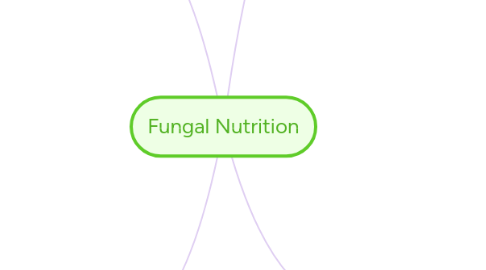
1. Nutrient Capture
1.1. Electrical dimension of hyphae
1.1.1. Gradient depends on the flow of proton
1.1.2. transport using symport protein
1.2. Enzyme secretion
1.2.1. extracellular enzyme
1.2.1.1. cellulose (cellulases)
1.2.1.2. lignin (oxidases)
1.2.1.3. organic phosphates (phosphatases)
1.2.1.4. amino sugar polymers (chitinases)
1.2.1.5. proteins (proteases)
1.2.2. use energy
1.3. Territorial defense
1.3.1. factors
1.3.1.1. regulate synthesis of depolymerase
1.3.1.2. use of wall-bound enzyme
1.3.1.3. production of antibiotics
2. Mineral Requirement
2.1. Nitrogen
2.1.1. Sources
2.1.1.1. Amino acid transamination
2.1.1.2. Ammonium
2.1.1.3. Nitrate
2.2. Phosphorus
2.2.1. Ways to get
2.2.1.1. Increase system uptake
2.2.1.2. release phosphatase enzyme
2.2.1.3. release organic acid
2.2.1.4. hyphae grow at available phosphorus area
2.2.1.5. store as polyphosphate
2.3. Iron
2.3.1. act as electron donor and acceptor
2.3.2. required in small amount
2.3.3. present as ferric oxide form
3. Nutrient Requirement
3.1. Media containing natural component
3.1.1. Carbohydrate
3.1.2. Acidic
3.2. Minimal media
3.2.1. iron
3.2.2. sulfur
3.2.3. vitamin
3.2.4. organic nitrogen
4. Carbon & Energy sources
4.1. Carbon sources
4.1.1. Glucose
4.1.2. Fructose
4.1.3. Sucrose
4.1.4. xylose
4.1.5. starch
4.1.6. cellulose
4.1.7. dextrin
4.1.8. lactose
4.2. Example
4.2.1. Utilization of various carbon sources for the growth of waterborne conidial fungi
4.2.1.1. Tetracheatum elegans
4.2.1.2. Tetracladium marchalianum
4.2.1.3. Pestalotiopsis submersus
4.2.1.4. Flagellospora penicillioides
4.2.2. Journal
4.3. Utilization of carbon source
4.3.1. for energy production
4.3.2. depends on membrane transporter
4.3.3. can utilize more than one type of carbon source for growth
4.3.3.1. diauxic growth
